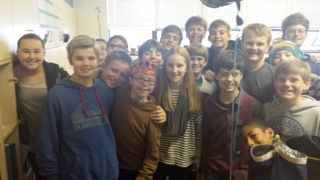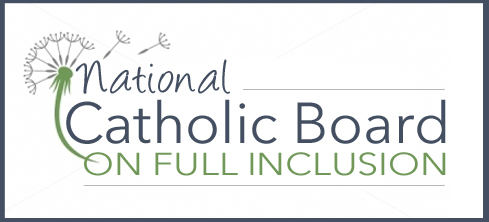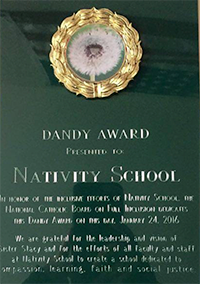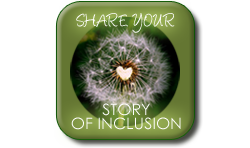Ask any educator or any parent “What is inclusion?” and you will most likely get a different answer from each person. But usually there is a key idea running through: typically developing students are learning alongside students with identified disabilities that traditionally would be separated into a segregated classroom.
For me, inclusion means this: Giving all children access to the curriculum, supporting students who need support, having high expectations for all students and presuming competence for all students.
— Archbishop Thomas Wenski

In my experience as both an educator and a parent, when this happens, all students succeed. I call students like my son, Patrick (who has Down Syndrome), the canary in the coalmine. Those students just show you a lot earlier on that they are lost, bored or in someway not understanding…but trust me,  there are plenty of typical kids in that same classroom who don’t understand. Their coping mechanisms are just more refined and they tend to fly under the radar.
there are plenty of typical kids in that same classroom who don’t understand. Their coping mechanisms are just more refined and they tend to fly under the radar.
 When we begin to make the content accessible to all students, we begin to recognize and accept that we are dealing with individuals and not robots. By being sensitive to all students’ learning needs, we honor each child. We seek out an additional resource. We find apps or technology that might help. We use music, poetry, art, physical fitness and games. In short, we make education more meaningful and more interesting. Additionally, we get better as educators.
When we begin to make the content accessible to all students, we begin to recognize and accept that we are dealing with individuals and not robots. By being sensitive to all students’ learning needs, we honor each child. We seek out an additional resource. We find apps or technology that might help. We use music, poetry, art, physical fitness and games. In short, we make education more meaningful and more interesting. Additionally, we get better as educators.
When we begin to see a student make a connection academically that normally wouldn’t happen, when we hear a student’s authentic voice within their writing that traditionally wasn’t there, when we see a fire of wonder and curiosity and intellectual passion in our students we have truly helped take that child to the next level and we have forever left our imprint of hope, support and high expectations on that student.

What we cannot measure or know, however, is how influential that hope, support, and intellectual curiosity will then influence others and in turn the future. This is the truly important, unspoken and often unrecognized influence of inclusion.
How can we know where the ripples end? A student watches another student on fire and wonders himself about that same topic…a student sees a student with a significant disability achieve something that might have seemed impossible in a world of being separated, another student watches what that support and expectations do and offers the same support to a sibling or other family member who needs it.

— Ignacio Estrada
That message alone is worth every effort.



